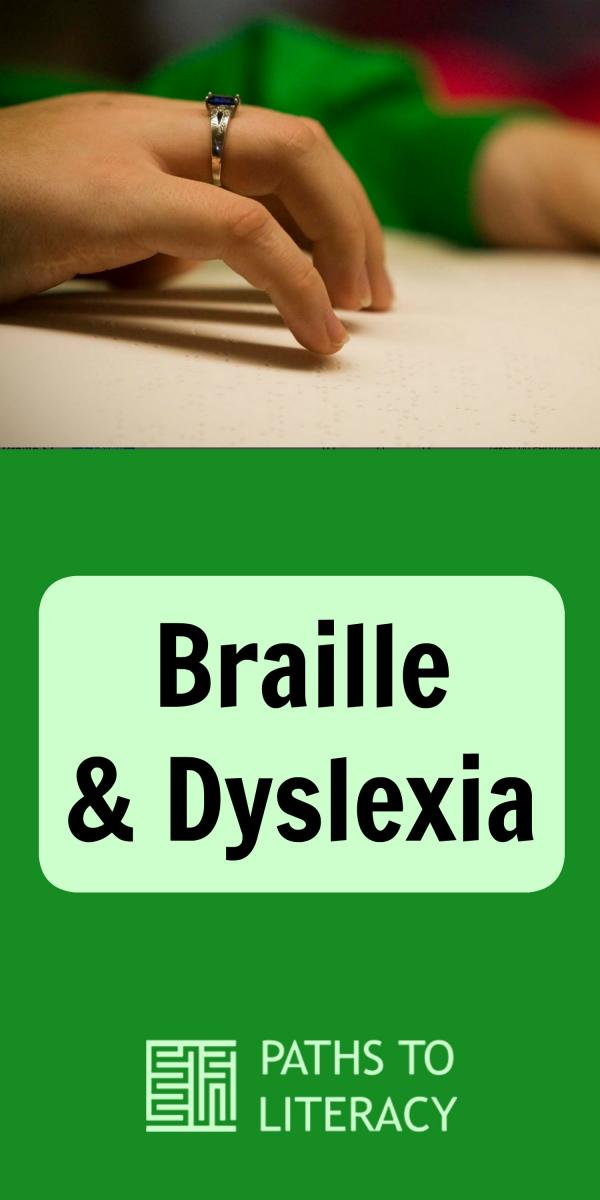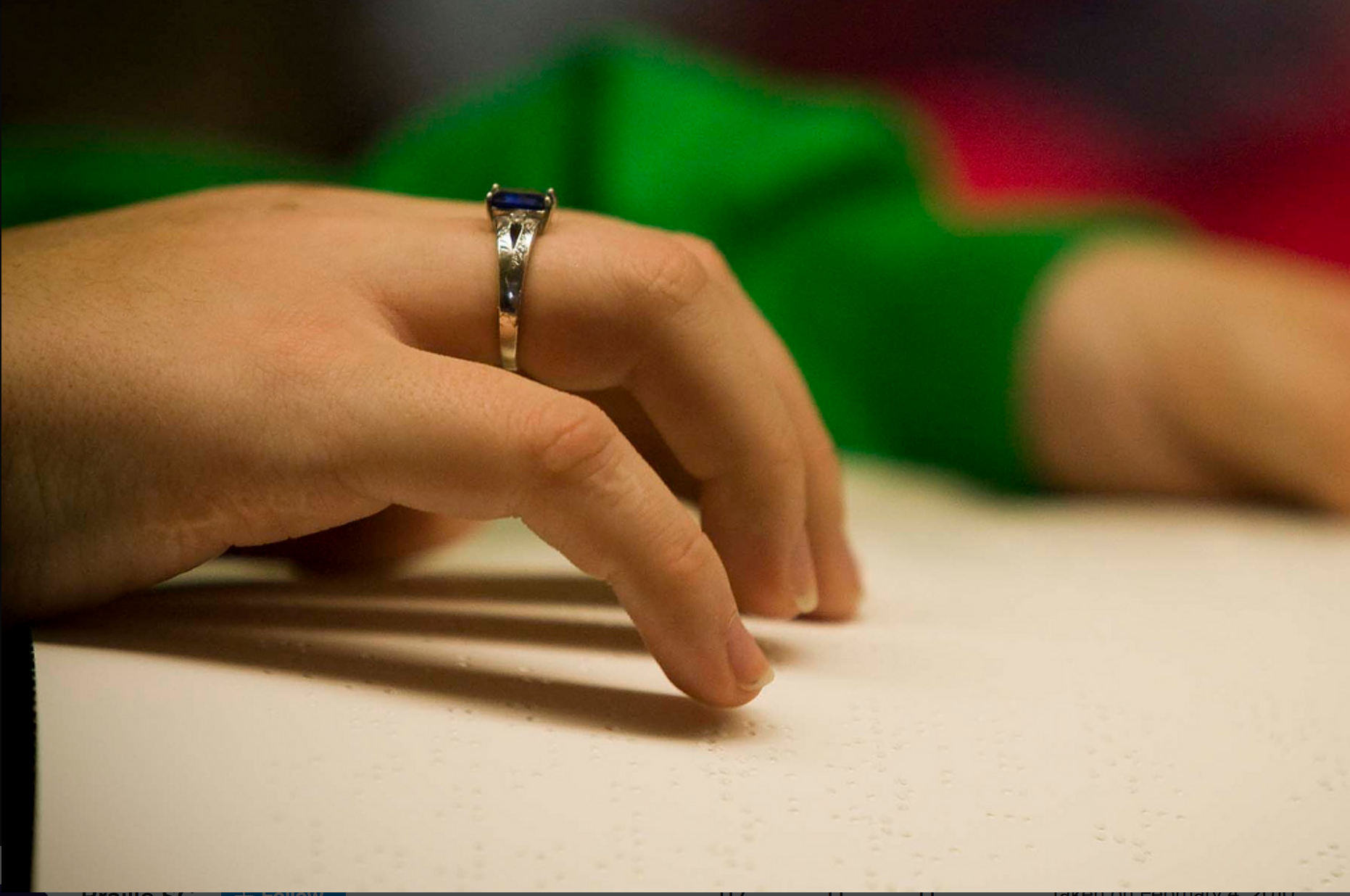When people think dyslexia, they think vision problems. Dyslexics see letters and numbers backwards if they can read at all. That’s the common thought, but only one aspect of dyslexia. Dyslexia is a reading disorder, not a seeing disorder. This means that braille readers may also be dyslexic. Anneli Veispak recently published an article in the Journal of Visual Impairment and Blindness that discusses this very problem. This is a new branch of research in both the fields of visual impairment and dyslexia. There is very little in the way of information connecting visual impairment with dyslexia. Below I will explain some of what dyslexia is and what to look for in braille readers.
Dyslexia is a series of neurological issues that exist strictly within the brain of the individual who has it. What exactly causes dyslexia is unknown, but there are many theories at work that describe possible causes for the disorder. Part of what makes dyslexia so hard to understand is that the human brain is not designed to read in the first place.
A Little Understanding of Dyslexia
If dyslexia is not backwards reading, then what is it? Current theories claim that dyslexia actually affects the phonological language centers of the brain. “Phonological” means the sound based part of language. This is where the letter “b” makes the “buh” sound. Language is based on phonological constructs that we call phonemes. These are the building blocks of words, which make up our sentences and conversations. The brain of a person with dyslexia has a timing issue with connecting sounds to meanings. This does not cause a major impact on normal daily activities, like conversation, unless really fast speeds are needed. A person with dyslexia may respond just a little slower to their name being called or may speak a little slower, but it is not something dramatic, we would just brush it off as a personality quirk. Reading requires much faster connections to be made. Sometimes this means that the connection isn’t made, sort of like a web page timing out, or the connection comes, but it is really slow.
Reading is accomplished by taking in a phonemic “image,” whether by sight or by touch, and sending it to the brain for decoding and meaning retrieval. Very early in life we are taught to connect sounds to physical objects, remember the See ‘N Say? The brain then pairs the visual or tactual image with a phonological, or sound, tag then moves on to pulling out the meaning as it normally would for the sound. Our brains are set up for language and generally connect sounds to meaning. Dyslexia is a problem with connecting this phonological tag to the meaning and when a word image is added, it causes greater slowdown in the retrieval. There is often even a misconnect with the image and its sound. This is why classic images of dyslexics transpose “b” and “d” or “p” and “q” when reading and writing.
While dyslexia is also not one of those things that can be nailed down to a single cause, all current theories of dyslexia agree on the phonological issues. The reason that dyslexia is so hard to pin down and so difficult to understand is that there is no “reading center” in our brains. We were never designed to read.
The Brain that Reads
In another article on this very site, we discuss the changes that reading braille makes within the human brain, especially within those who are blind. Well, it’s not just the blind that restructure their brains by learning to read, we all do it. In two very good books, Stanlislas Dehaene and Maryanne Wolf discuss just what learning to read does to our brains. In these books, which give similar messages in different levels of detail, it’s talked about extensively how simply learning to read alters the pathways within our brains. Wolf says that we’ve altered our brains to accept reading and Dehaene believes that we’ve created a system of reading and writing that follows the path of least resistance to minimize the changes. Over the course of centuries, reading and writing systems have changed to an alphabetic system in the western cultures that require phonemes and such, as we covered earlier.
Some Differences in Reading in Eastern Cultures
Not only is there not a centralized “reading center” in our brains, but symbol oriented writing styles, such as Chinese or Japanese, use a different part of the brain. That’s right, Japanese kanji uses different pieces of the brain for the sound/image connections to meaning. The symbols of those writing systems often contain the meaning of entire words or phrases in a phonetic system. That means that one symbol could mean “way of the warrior.” These Asian writing systems are read with a different part of the brain, but they are still susceptible to many of the reading disorders that affect our phonetic alphabet, including dyslexia. Forms of dyslexia can affect the regions of the brain that make the lexical connection between symbol and meaning, causing the same types of slowdowns and misreads that occur with words and letters.
Dyslexia and Braille
Now that we have a pretty grasp on what dyslexia is and isn’t let’s talk about how it affects braille readers. Braille is reading. That’s a fact. Many sighted teachers of braille read it visually, some students with visual impairments that aren’t blind can do both, and the totally blind read with their fingers. “But wait,” you say, “doesn’t the touch take a different path in the brain than the eyes?” Yes, but that’s like taking the interstate to your mother’s house. Follow this example: You and a friend are meeting in a town that is halfway between where you both live. You both take different highways to get there and approach your destination from different directions, but the last road is the same. Now, it turns out the city is doing roadwork at the intersection of the street that you both turn on to, slowing down all the traffic. It doesn’t matter how you got there, the construction still slows you both down. That roadwork is dyslexia.
Braille travels the neural network from the fingertips up to the brain and registers there for the word image to meaning connection that takes place in all reading. In the case of a braille reader with dyslexia, that image information could lag, get misconnected, or get turned around, just like with a sighted reader. The brain doesn’t really differentiate between a printed word that is seen and a braille word that is touched.
How Do We Know if it is Dyslexia?
If a student has, and by student I mean anyone learning to read either print or braille, a good, intellectually supportive home environment or no other obvious signs of mental impairment, dyslexia may be the cause of reading difficulties. Known visual impairments are usually included in the list as well, but we are talking about reading braille as well. According to Veispak, students learning braille have more work in learning to read than sighted students. Generally, they forge better phonological connections than sighted students do. Studies have also shown that braille readers are often slightly behind their sighted counterparts in reading tests. If you suspect your student is having trouble reading, the school has tests they can administer to see if dyslexia may be the problem.
If you or your student is diagnosed with dyslexia work closely with the Special Education team within your school or school district and emphasize the new work being done to bridge the gap between teaching students with dyslexia and teaching braille. The most important thing for our parents, teachers, and independent adults to remember is that this is a brand new frontier. Let’s all work together to find new and innovative ways to teach and learn.
See also Understanding Dyslexia in Children with Visual Impairments.

This article was originally posted on the BrailleSC website, which was funded by a grant from the US Department of Education with support from the University of South Carolina Upstate and The Maryland Institute for Technology in the Humanities.




